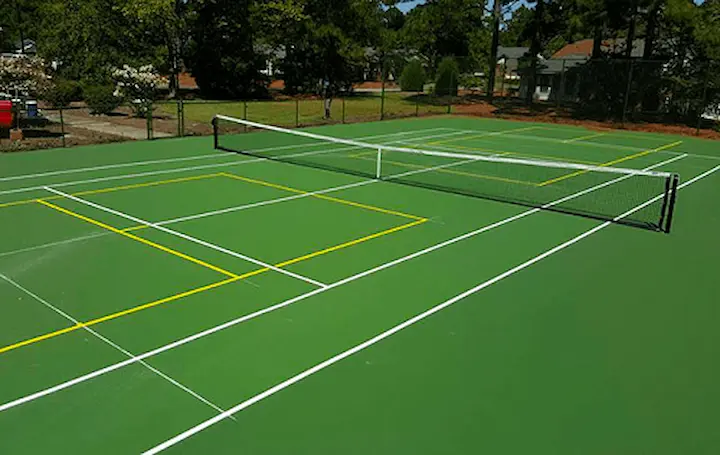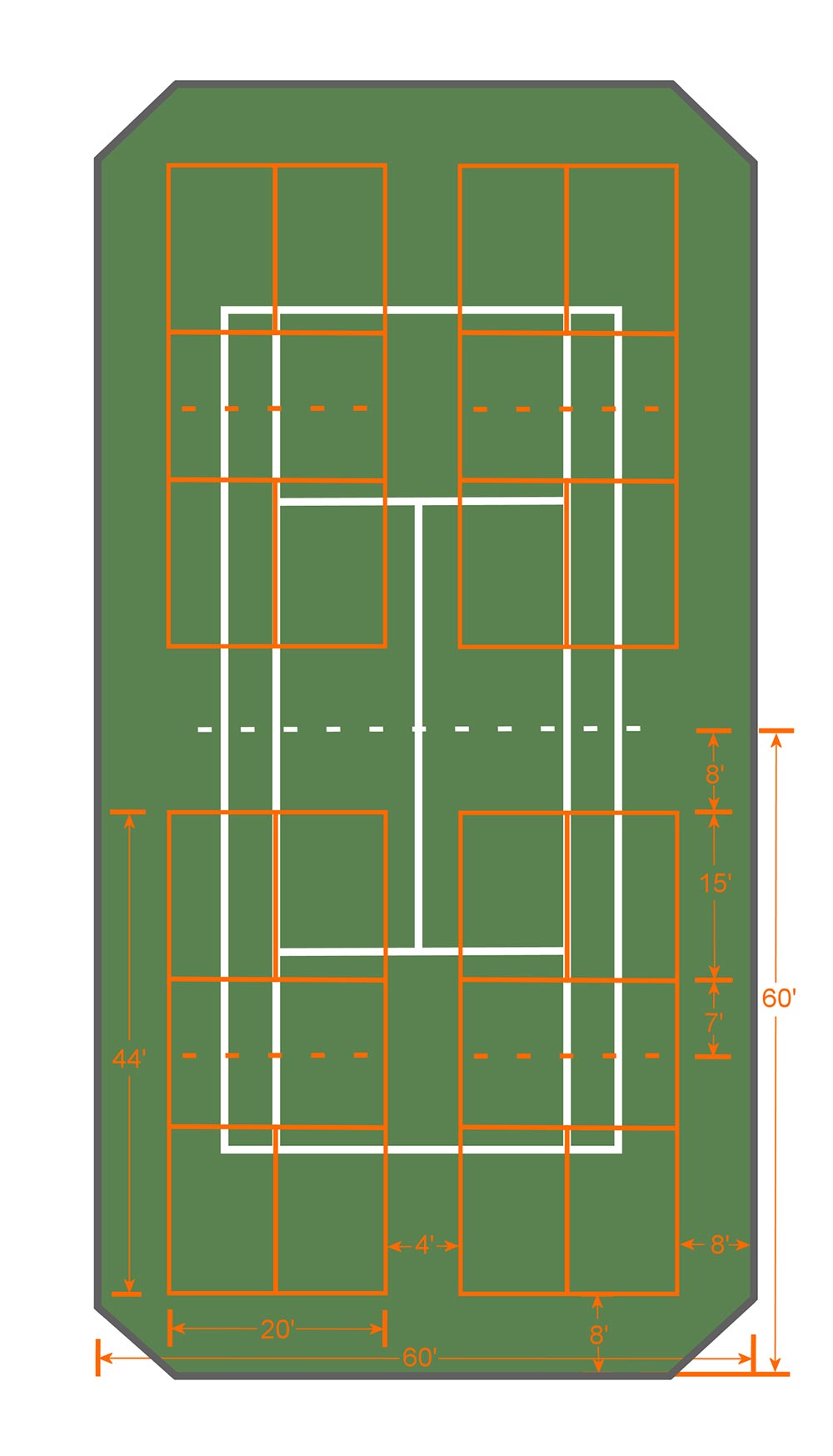Comprehensive Guide to Pickleball Courts Design & Building in Illinois and Midwest
Comprehensive Guide to Pickleball Courts Design & Building in Illinois and Midwest
Blog Article
Secret Factors in the Building And Construction of Pickleball Courts: From Website Option to Final Coatings
The building of pickleball courts incorporates a series of critical aspects, beginning with the choice of a suitable website that stabilizes ease of access with ecological considerations. Necessary elements such as court dimensions, surface area products, and drain systems considerably impact not only the top quality of play but likewise the long life of the facility. In addition, focus to lights and ending up touches can boost the total experience for players and spectators alike. Recognizing how each of these parts interrelates might expose understandings that are often neglected, triggering a more detailed examination of best techniques in court building and construction.
Website Option Criteria
When starting the building of pickleball courts, it is vital to pin down the site selection criteria that will certainly make certain optimum playability and access. The place has to be conveniently obtainable for players, ideally positioned near suburbs or recreation center, to motivate involvement.
Furthermore, the terrain needs to be degree and stable, as uneven ground can bring about safety and security dangers and impact gameplay. Adequate water drainage is likewise vital; selecting a website with great water runoff will help preserve court problems during adverse climate.
One more vital factor to consider is the accessibility of utilities. Accessibility to electrical energy and water is necessary for lights and maintenance objectives. Furthermore, proximity to auto parking facilities is essential, promoting easy accessibility for players and viewers alike.
Environmental aspects can not be overlooked; all-natural color from trees can boost player convenience, while exposure to prevailing winds might disrupt play. Zoning policies and area assistance ought to be thought about to make certain that the project lines up with neighborhood guidelines and receives the support it needs for successful implementation. By meticulously examining these standards, stakeholders can create an inviting and practical setting for pickleball fanatics.
Court Dimensions and Layout
To ensure optimal gameplay and adherence to regulations, the dimensions and design of pickleball courts have to be carefully specified. A standard pickleball court measures 20 feet in size and 44 feet in size for both songs and doubles play.
The net height is evaluated 36 inches at the sidelines and 34 inches at the facility, developing a minor dip that impacts sphere trajectory. Court markings are equally important; lines should be 2 inches vast and distinctive in shade to make sure exposure.
Furthermore, a buffer area bordering the court is recommended, generally extending 5 to 10 feet past the sidelines and standards to fit players' activities and improve safety. Proper format and dimensions not just make sure compliance with main policies yet likewise enhance the total having fun experience, accommodating both entertainment and competitive play. Careful planning in these locations is vital to the successful construction of pickleball courts.
Surface Area Material Options
Picking the best surface visit homepage material for pickleball courts is critical for making sure optimal gamer performance and security. The choice of surface area can significantly influence gameplay, including round bounce, traction, and gamer comfort.
There are a number of options offered, each with its distinctive qualities. Asphalt is a preferred selection as a result of its longevity and low upkeep requirements. It supplies a strong playing surface that can hold up against different climate condition yet may need routine resurfacing.
Concrete is another visit our website commonly made use of product, providing excellent longevity and a smooth surface. It enables consistent sphere bounce however can be tough on players' joints, making it less desirable for long-lasting play without correct cushioning.
For those seeking improved convenience and shock absorption, supported acrylic surface areas present a practical option. These surface areas incorporate a base layer with an acrylic overcoat, providing improved traction and a softer feel, which is helpful for lowering the risk of injuries.
Lastly, artificial turf is acquiring grip, especially for multi-purpose centers. Its adaptability and reduced upkeep needs make it an attractive choice, though it may not supply the exact same sphere action as typical tough courts. Careful consideration of these choices will guarantee an optimal playing environment.
Drainage and Lights Factors To Consider
Correct drain and effective lights are vital components in the construction of pickleball courts, significantly affecting both playability and security. Adequate drain systems protect against water build-up, which can lead to unsafe surfaces and damage to the court structure.
Lighting is similarly essential, especially for courts planned for night use. Appropriate lighting improves presence, ensuring that players can see the round plainly and reducing the danger of crashes. The positioning of lighting fixtures need to be strategically prepared to get rid of darkness and give even distribution of light across the court. LED lights are suggested for their power performance and longevity, providing brilliant important site lighting while minimizing functional prices.

Last Surfaces and Upkeep
After dealing with drain and illumination factors to consider, interest turns to the final finishes and ongoing maintenance of pickleball courts. Illinois and midwest. The choice of surface area product is essential, as it impacts both playability and sturdiness. Typical options include acrylic coatings and specialized sporting activities surface areas that supply ideal traction and padding. These coatings must be applied in multiple layers to ensure strength versus weather condition elements and wear.

Seasonal maintenance may consist of resurfacing every few years, depending upon use and environmental aspects. Effectively maintaining webs, court lines, and bordering locations is equally crucial to give a safe and satisfying having fun experience. By purchasing quality surfaces and sticking to an organized upkeep schedule, facility owners can guarantee their pickleball courts continue to be in excellent condition for many years to find.
Verdict
In conclusion, the effective building of pickleball courts hinges on thorough interest to several key variables. High quality surfaces and a durable maintenance schedule are essential for maintaining the court's condition, boosting the general experience for players and viewers alike.
Report this page